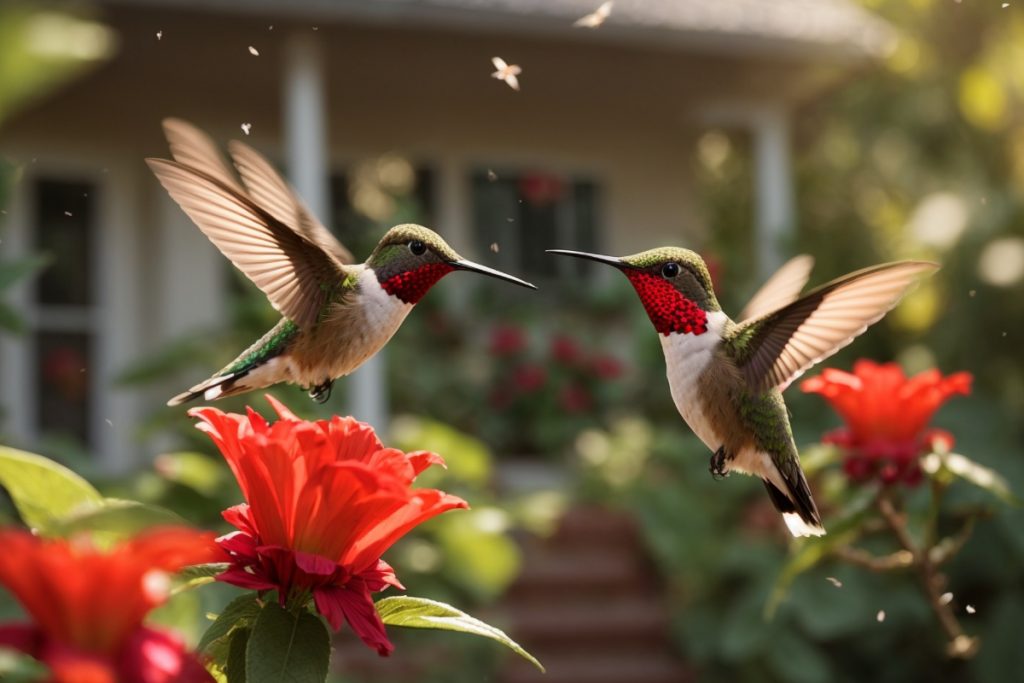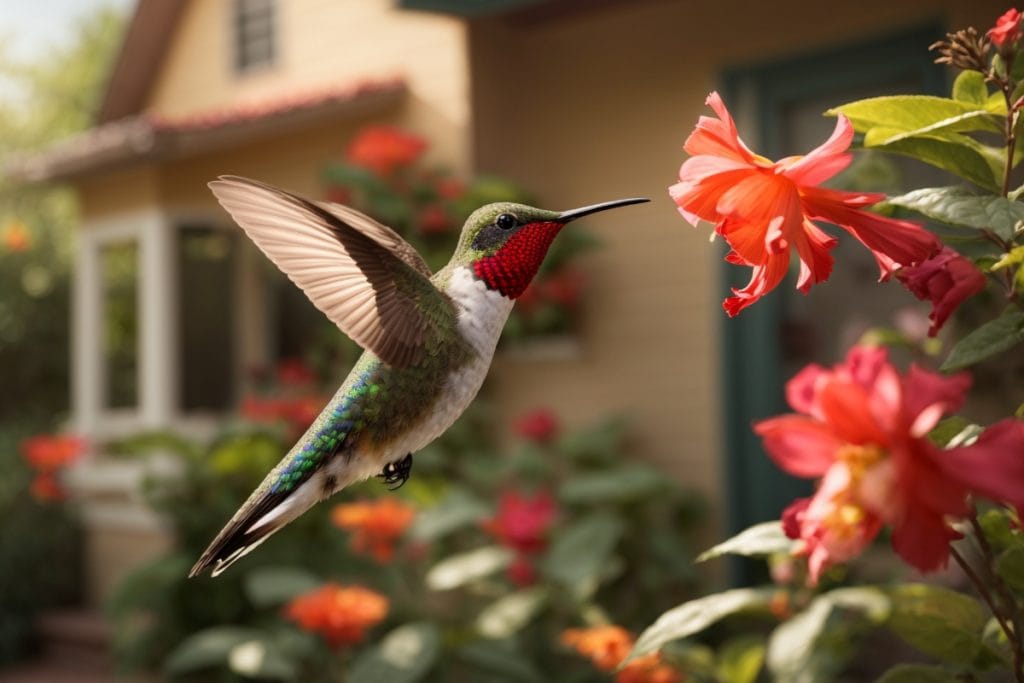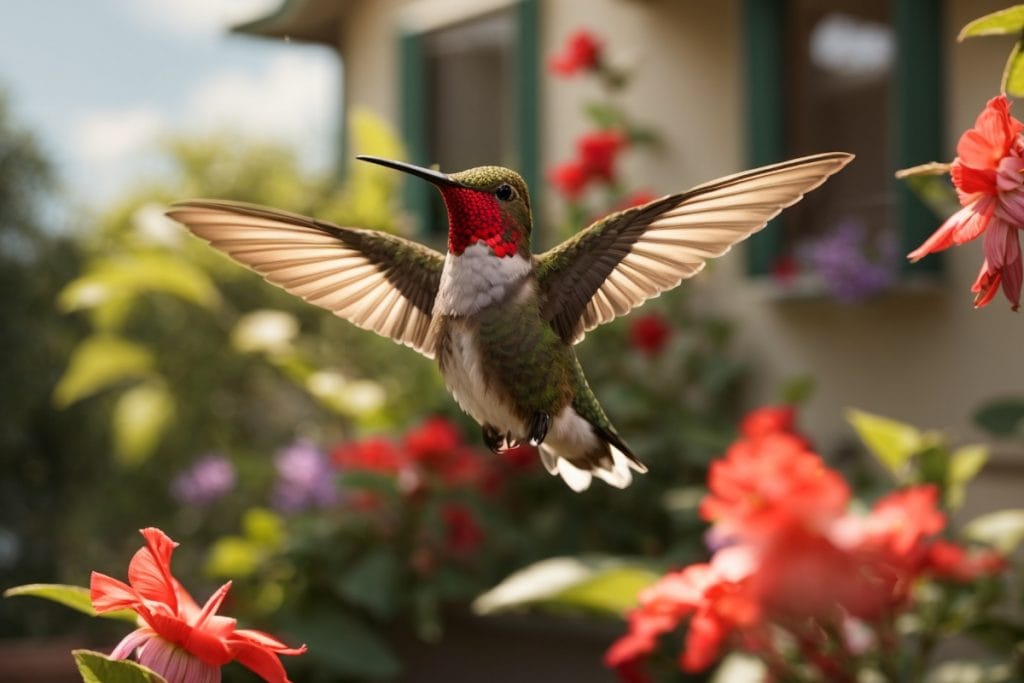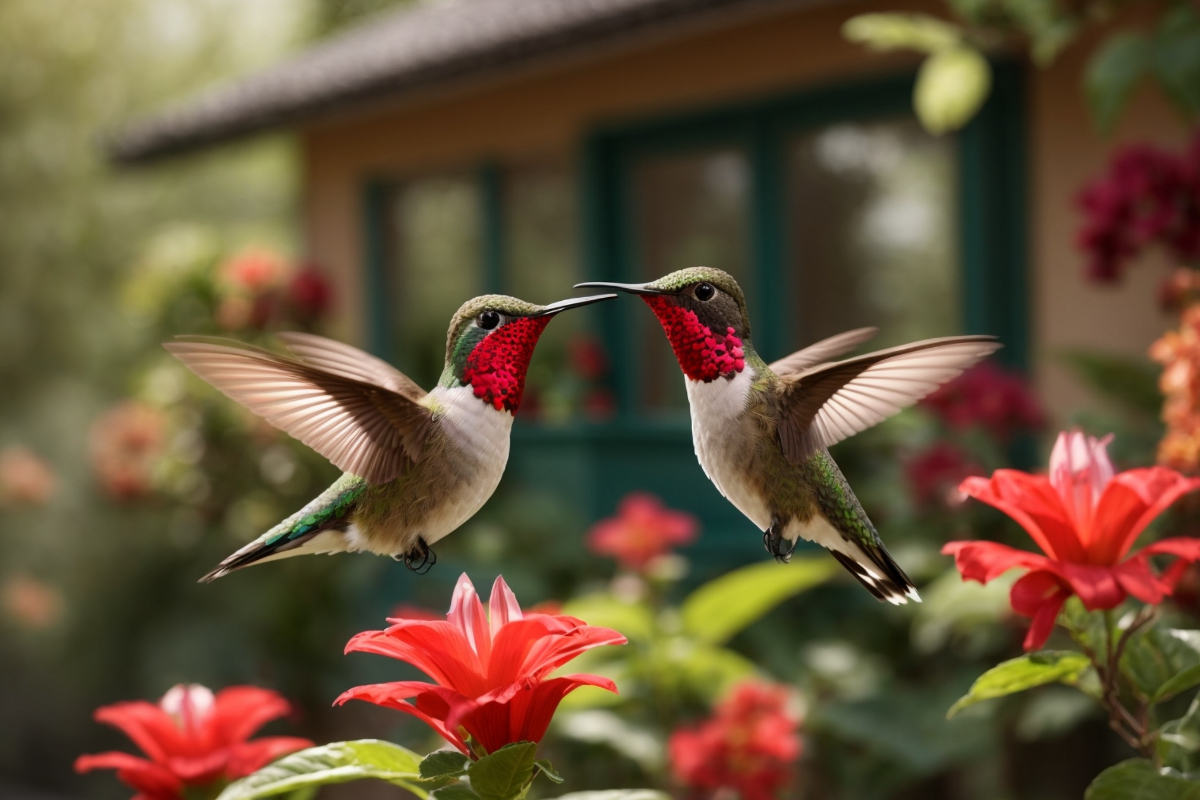Hummingbirds are commonly known for their small size, agile movements, and long migrant journeys. But of all their remarkable characteristics, their innate ability to migrate tops the list for many people. Bird lovers from various states eagerly anticipate hummingbird season to observe these fascinating tiny birds.
Even though there are no resident hummingbird species in Minnesota, residents of the state can still look forward to spotting a common species of hummingbird that arrives during warm weather.
These tiny birds flourish during this season, making it an exciting time to observe their vibrant presence. But when the warm weather turns into freezing temperatures, these birds start leaving Minnesota. Let’s find out when this happens.
Key Takeaways
- Migration in Minnesota: Ruby-throated hummingbirds arrive between late April and early May and leave by mid-September.
- Species in Minnesota: The Ruby-throated is common, with occasional sightings of Anna’s, Calliope, and Rufous hummingbirds.
- Attracting Techniques: Plant nectar-rich native plants and set up sugar-water feeders by mid-April, removing them by mid-September.
- Winter Migration: Most hummingbirds migrate to Central America and Mexico during winter; sightings of hummingbirds in Minnesota during winter are rare; those seen are either older or injured.
Related post to read about Best Hummingbird Feeders.
- Key Takeaways
- When Do Hummingbirds Leave Minnesota?
- What Species Of Hummingbirds Are Commonly Found In Minnesota?
- Where Can You Find Hummingbirds In Minnesota?
- When Do Hummingbirds Arrive In Minnesota?
- Do Hummingbirds Arrive In Minnesota At The Same Time?
- Do The Migration Patterns Of Hummingbirds In Minnesota Change?
- How To Prepare For The Arrival Of Hummingbirds in Minnesota
- What Kinds Of Plants Should Be Grown To Attract Hummingbirds In Minnesota?
- Can You Attract Hummingbirds With Feeders In Minnesota?
- When Should You Put Out Your Hummingbird Feeders In Minnesota?
- When Should Hummingbird Feeders Be Taken Down In Minnesota?
- Can I See Hummingbirds During Winter In Minnesota?
- Where Do Minnesota Hummingbirds Migrate To In The Winter?
- Conclusion
- Useful Links:
When Do Hummingbirds Leave Minnesota?
Hummingbirds leave Minnesota when summer gives way to winter, typically between the end of August and early September. By mid-September, the last stragglers of migrating hummingbirds will have left Minnesota.

Any hummingbird species you find in the state after this time are the Ruby-throated species, as they are the only species that commonly nest in the state.
What Species Of Hummingbirds Are Commonly Found In Minnesota?
Although there are over 350 species of hummingbirds around the world, the most commonly seen hummingbird in Minnesota is the Ruby-throated species. It is important to note that this species is not a permanent resident of Minnesota but rather a seasonal visitor.
Occasionally, rare hummingbird species, often referred to as accidental visitors, can be found in Minnesota. These rarely-sighted species in Minnesota are Anna’s, Calliope, and Rufous hummingbirds.
Where Can You Find Hummingbirds In Minnesota?
Commonly referred to as the land of 10,000 lakes, Minnesota has wonderful spots where hummingbirds can be frequently spotted upon their arrival in the state.
The Ruby-throated species are often found in serene nature reserves, woodsy areas, and gardens in Minneapolis, and fun fact – you can easily attract them to your space.
When Do Hummingbirds Arrive In Minnesota?
Typically, the Ruby-throated hummingbird arrives in Minnesota around late April – early May. Their arrival timing varies slightly from year to year depending on weather conditions and availability of food supply.
Related post to read about Ruby-Throated Hummingbird Migration Map.

Do Hummingbirds Arrive In Minnesota At The Same Time?
Hummingbirds don’t travel in a flock like other birds. Being solo travellers, they don’t migrate at the same time, so they arrive in Minnesota at different times. Their arrival follows a gradual migration pattern, as male hummingbirds are usually the first to arrive in Minnesota.
They arrive in the state on time to set up their territories, while the females join them soon after.
Do The Migration Patterns Of Hummingbirds In Minnesota Change?
The migration patterns of hummingbirds in Minnesota are not fixed and can change. Although hummingbird migration is instinctive, several factors can influence the migration pattern of these birds, particularly weather conditions and food supply.
These birds migrate in order to locate regions with tropical climates that assure them of abundant food supply from their primary food sources – nectar from flowers and insects.

How To Prepare For The Arrival Of Hummingbirds in Minnesota
As pollinators, hummingbirds are drawn to plants that are pollen-friendly. If you live in Minnesota and want to attract these special birds, you stand a chance of doing so by planting native plants. These birds are naturally drawn to nectar-rich flowers, as they provide their primary food source. So, if you can cultivate a variety of plants that offer a continuous bloom, then that’s a sure way to attract them.
What Kinds Of Plants Should Be Grown To Attract Hummingbirds In Minnesota?
When cultivating plants, always opt for native plants, as this is a key way to make your garden hummingbird-friendly. Instead of investing in imported plants, native tabular flowers are a better option. Native plants do not only provide a natural source of nectar to hummers but are also beneficial to the local ecosystem.
In this list are some examples of Minnesota annual and perennial native flowers that can attract hummingbirds: cardinal flowers, columbine, beard tongue, native coral bell, trumpet creeper, bee balm, native salvias, native penstemons, hibiscus, fuchsia, amongst others.

Can You Attract Hummingbirds With Feeders In Minnesota?
Planting native plants isn’t the only way to attract these birds: you can attract these birds by providing feeders. These feeders should be filled with artificial nectar consisting of a cup of white sugar and 4 cups of water.
Nectar feeders don’t provide hummingbirds with their full nutrients, so they are essentially just a form of supplementary diet for these birds. Once you prepare this nectar, fill them up in your feeders and hang them outside your window.
Hummingbirds are territorial birds, so to avoid bird fights, you can consider filling up multiple feeders with a sugar-water solution and hanging them apart.

When Should You Put Out Your Hummingbird Feeders In Minnesota?
To attract early migrators in Minnesota, put out your feeders about a week or two before their arrival. Mid-April is a good time to put out your feeders in Minnesota.
To keep your solution fresh and safe for your bird visitors, remember to consistently change it every few days, especially in warm weather. This is an important maintenance tip because sugar solutions can ferment quickly.
When Should Hummingbird Feeders Be Taken Down In Minnesota?
Generally, it is recommended that you take down your feeders at least two weeks after you last spotted them at your feeders. In Minnesota, it is safe to take down your feeders in mid-September.

Can I See Hummingbirds During Winter In Minnesota?
Because there are no resident hummingbird species in Minnesota, it is highly unusual to come across hummingbirds in Minnesota during winter. More often than not, the common species found in the state – Ruby-throated – are seasonal visitors that migrate to warmer regions when the weather gets unbearable and there is a decline in their food supply.
Any hummingbirds found in Minnesota during winter are likely either brave souls that can overwinter or older and injured birds that can’t migrate.
Where Do Minnesota Hummingbirds Migrate To In The Winter?
Hummingbirds in Minnesota mostly migrate south to wintering grounds in Central America and Mexico. In these regions, they find warm weather and an abundance of blooming flowers to sustain them during the winter months.
Conclusion
Hummingbirds possess fascinating traits, including their ability to remember every flower and feeder they’ve visited in previous seasons. If you make your environment a home to them, then you can be sure of their return in seasons to come. Caring for hummingbirds is truly a rewarding task for bird lovers.
I hope you found this article helpful. If you have any questions, please feel free to leave them in the comment section below.
Thanks for reading.
Useful Links:
Related Posts to Read – Hummingbirds Migrations:
- Best Hummingbird Feeders.
- When Do Hummingbirds Leave Ohio?
- When Do Hummingbirds Leave Michigan?
- When Do Hummingbirds Leave Pennsylvania?
- When Do Hummingbirds Leave Florida?
- When Do Hummingbirds Leave Oregon?
- When Do Hummingbirds Leave New York?
- When Do Hummingbirds Leave Oklahoma?
Related Posts to Read:
- Do Hummingbirds Beaks Open When Feeding?
- The Mysteries of Hummingbird Flight.
- 6 Fascinating Facts About Hummingbird Sizes.
- Ruby-Throated Hummingbird Migration Map.
References:
- About Minnesota.
- About Hummingbird (Link).
- Greenewalt, C. H. (1960). Hummingbirds. New York: Doubleday. Google Scholar.
- Carey C. The impacts of climate change on the annual cycles of birds. Philos Trans R Soc Lond B Biol Sci. 2009 Nov 27; 364(1534):3321-30. doi: 10.1098/rstb.2009.0182. PMID: 19833644; PMCID: PMC2781852.
- Rico-Guevara A, Rubega MA, Hurme KJ, Dudley R. Shifting Paradigms in the Mechanics of Nectar Extraction and Hummingbird Bill Morphology. Integr Org Biol. 2019 Jan 2;1(1):oby006. doi: 10.1093/iob/oby006. PMID: 33791513; PMCID: PMC7671138.
- Tyrrell LP, Goller B, Moore BA, Altshuler DL, Fernández-Juricic E. The Orientation of Visual Space from the Perspective of Hummingbirds. Front Neurosci. 2018 Jan 30;12:16. doi: 10.3389/fnins.2018.00016. PMID: 29440985; PMCID: PMC5797624.
- Hummingbirds Sighting (Journey North Map).
